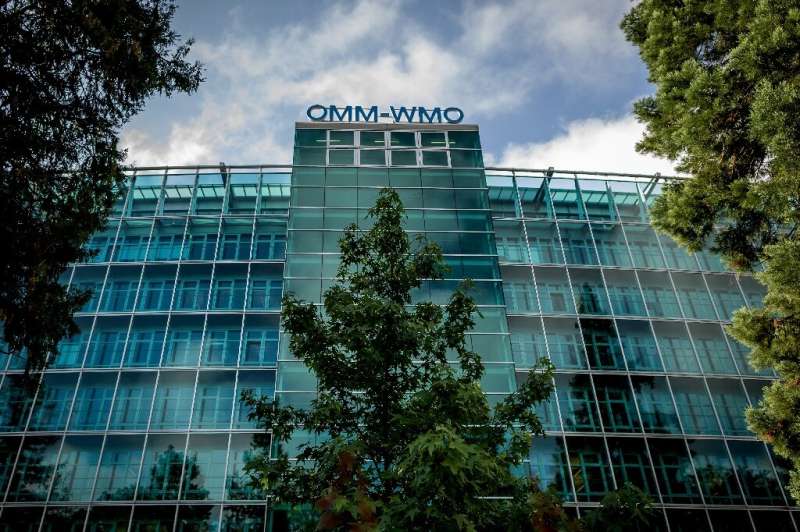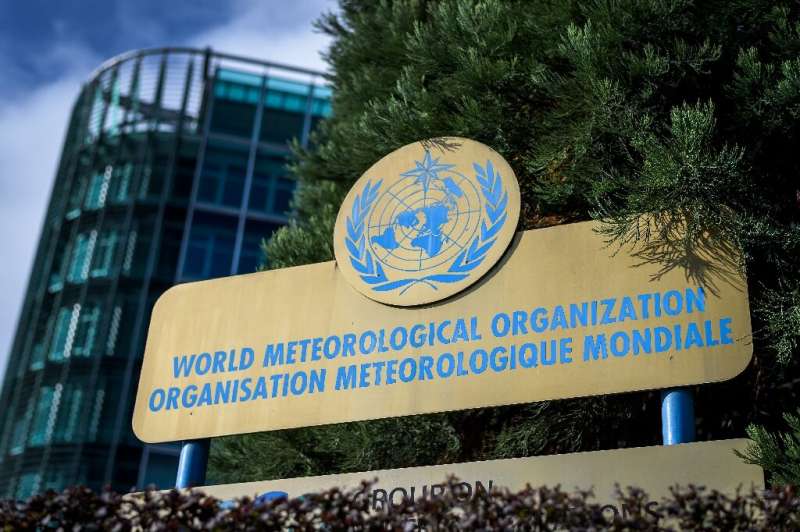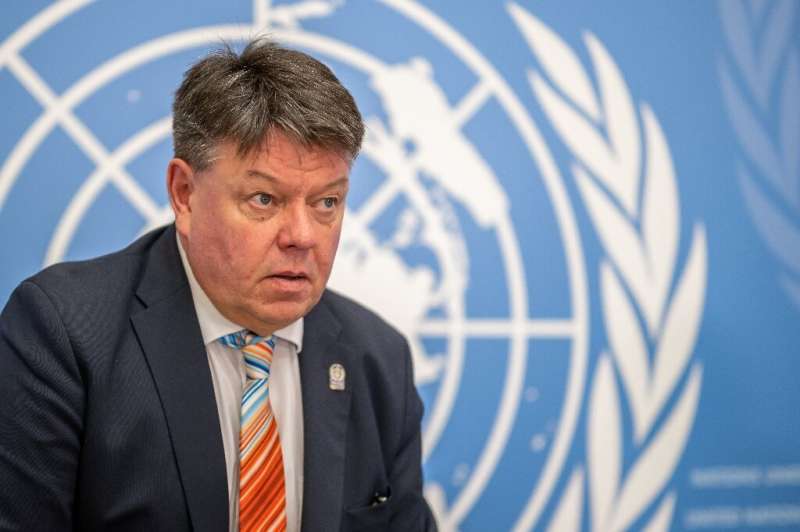This article has been reviewed according to Science X's editorial process and policies. Editors have highlighted the following attributes while ensuring the content's credibility:
fact-checked
reputable news agency
proofread
WMO: tracking the world's weather and climate

The World Meteorological Organization, which chose Argentina's Celeste Saulo as its next leader on Thursday, is at the forefront in monitoring climate change.
The specialized UN agency for weather and the climate traces its roots back 150 years to the early days of shipping forecasts.
Remit
The WMO is dedicated to meteorology, operational hydrology and climatology—weather, water and the climate. It also covers related geophysical sciences such as oceanography and atmospheric chemistry.
IMO forerunner
The WMO was preceded by the International Meteorological Organization, founded in 1873.
The shortcomings in using Morse Code to transmit weather reports and the lack of a uniform system for observations became the rationale for setting up the IMO.
These days operations have moved to supercomputers and space technology. The average global temperature is more than one degree Celsius (two degrees Fahrenheit) higher than when the IMO began.
The organization reformed as the WMO in 1950 and became the UN's meteorological agency the following year.
It is the second-oldest agency in the UN after the International Telecommunication Union, set up in 1865.
WMO
The WMO issued its first statement on climate change in 1976, voicing concern that greenhouse gases emitted into the atmosphere by human activities would lead to major changes in the climate.

The WMO co-founded The Intergovernmental Panel on Climate Change (IPCC), which in 2007 was jointly awarded the Nobel Peace Prize, along with former US vice president Al Gore.
Much of the WMO's mission is in bringing together the work of national meteorological agencies.
More than 230 satellites, 10,0000 surface weather stations, 1,000 upper air stations, 7,000 ships, 1,100 buoys and 3,000 specially equipped commercial aircraft measure key parameters of the atmosphere, land and ocean.
These observations are shared freely through the WMO system.
The WMO says today's five-day forecasts are as reliable as the two-day forecasts of 25 years ago, translating into "billions of dollars in economic gains".
Headquarters
The IMO was first based in Utrecht in the Netherlands, then in Lausanne from 1939.
After becoming the WMO, it moved to Geneva. Its glass-clad headquarters, a 120-meter-long, elliptical nine-storey building, was inaugurated in 1999.
It is down the slope from the UN's Palais des Nations, overlooking Geneva's botanical gardens and the World Trade Organization.
Members, budget and bosses
The WMO has 193 member states and territories.
The WMO's budget for 2024-2027 is 278 million Swiss francs ($304.4 million). China and the United States have been the biggest contributors. The agency had 315 people on the payroll by the end of 2021.

The WMO has only had six secretaries-general since its founding, including Nigeria's Godwin Obasi (1984-2003), the first African to run a UN body.
Saulo, the head of Argentina's national weather agency, will become the first woman to lead the WMO.
Member states chose her to take over from the current secretary-general, Petteri Taalas of Finland, when his second four-year term—now the maximum, expires at the end of 2023.
Top future projects
The WMO wants everyone in the world covered by weather hazard early warning systems by the end of 2027.
This week it made the cryosphere—the frozen world—a top priority, given the impact of melting on sea levels.
It also said it would boost greenhouse gas monitoring with a new system integrating both space- and surface-based observations.
It wants to ramp up the tracking of where greenhouse gases emerge and end up, something it says could be possible on a one-square-kilometer grid within a decade.
Records archive
The WMO has a Weather and Climate Extremes Archive, containing a variety of records including temperature, air pressure, rainfall, wind speed, hail and lightning.
The four latest records, dating from 2020, were for the longest distance and longest duration lightning flash, and for the highest temperatures in the Antarctic region and above the Arctic Circle.
© 2023 AFP





















